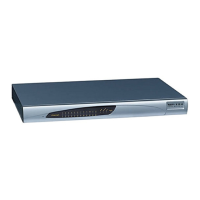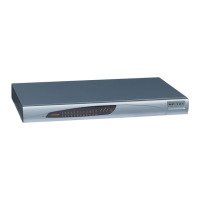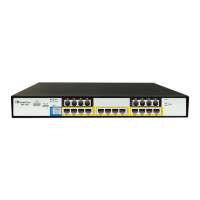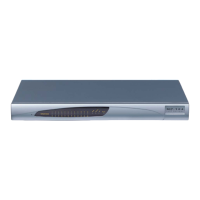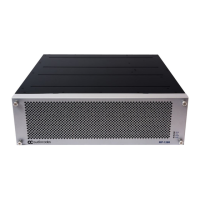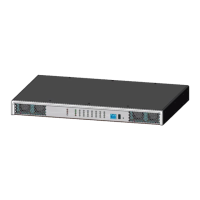MediaPack SIP
MediaPack SIP User’s Manual 72 Document #: LTRT-65405
Table 5-6: Supplementary Services Parameters (continues on pages 72 to 74)
Parameter Description
Enable Hold
[EnableHold]
No [0] = Disable the Hold service (default).
Yes [1] = Enable the Hold service.
If the Hold service is enabled, a user can activate Hold (or Unhold) using the hook-flash.
On receiving a Hold request, the remote party is put on-hold and hears the hold tone.
Note: To use this service, the gateways at both ends must support this option.
Hold Format
[HoldFormat]
Determines the format of the hold request.
0.0.0.0 [0] = The connection IP address in SDP is 0.0.0.0 (default).
Send Only [1] = The last attribute of the SDP contains the following ‘a=sendonly’.
Enable Transfer
[EnableTransfer]
No [0] = Disable the Call Transfer service (default).
Yes [1] = Enable the Call Transfer service (using REFER).
If the Transfer service is enabled, the user can activate Transfer using hook-flash
signaling. If this service is enabled, the remote party performs the call transfer.
Note 1: To use this service, the gateways at both ends must support this option.
Note 2: To use this service, set the parameter ‘Enable Hold’ to ‘Yes’.
Transfer Prefix
[xferPrefix]
Defined string that is added, as a prefix, to the transferred / forwarded called number,
when Refer / Redirect message is received.
Note 1: The number manipulation rules apply to the user part of the ‘REFER-TO /
Contact’ URL before it is sent in the INVITE message.
Note 2: The ‘xferprefix’ parameter can be used to apply different manipulation rules to
differentiate the transferred / forwarded number from the original dialed number.
Enable Call Forward
[EnableForward]
No [0] = Disable the Call Forward service (default).
Yes [1] = Enable Call Forward service (using REFER).
For FXS gateways a Call Forward table must be defined to use the Call Forward
service.
To define the Call Forward table, refer to Section
5.5.8.4 on page 104.
Note: To use this service, the gateways at both ends must support this option.
Enable Call Waiting
[EnableCallWaiting]
No [0] = Disable the Call Waiting service (default).
Yes [1] = Enable the Call Waiting service.
If enabled, when an FXS gateway receives a call on a busy endpoint, it responds with a
182 response (and not with a 486 busy). The gateway plays a call waiting indication
signal. When hook-flash is detected, the gateway switches to the waiting call.
The gateway that initiated the waiting call plays a Call Waiting Ringback tone to the
calling party after a 182 response is received.
Note 1: The gateway’s Call Progress Tones file must include a ‘call waiting Ringback’
tone (caller side) and a ‘call waiting’ tone (called side, FXS only).
Note 2: The ‘Enable Hold’ parameter must be enabled on both the calling and the called
sides.
For information on the Call Waiting feature, refer to Section
8.1.5 on page 171.
For information on the Call Progress Tones file, refer to Section
16.1 on page 241.
Number of Call Waiting
Indications
[NumberOfWaitingIndication
s]
Number of waiting indications that are played to the receiving side of the call (FXS only)
for Call Waiting.
The default value is 2.
Time Between Call Waiting
Indications
[TimeBetweenWaitingIndica
tions]
Difference (in seconds) between call waiting indications (FXS only) for call waiting.
The default value is 10 seconds.
Time before Waiting Indication
[TimeBeforeWaitingIndicatio
n]
Defines the interval (in seconds) before a call waiting indication is played to the port that
is currently in a call (FXS only).
The valid range is 0 to 100. The default time is 0 seconds.
[Waiting Beep Duration]
WaitingBeepDuration
Duration (in msec) of waiting indications that are played to the receiving side of the call
(FXS only) for Call Waiting.
The default value is 300.

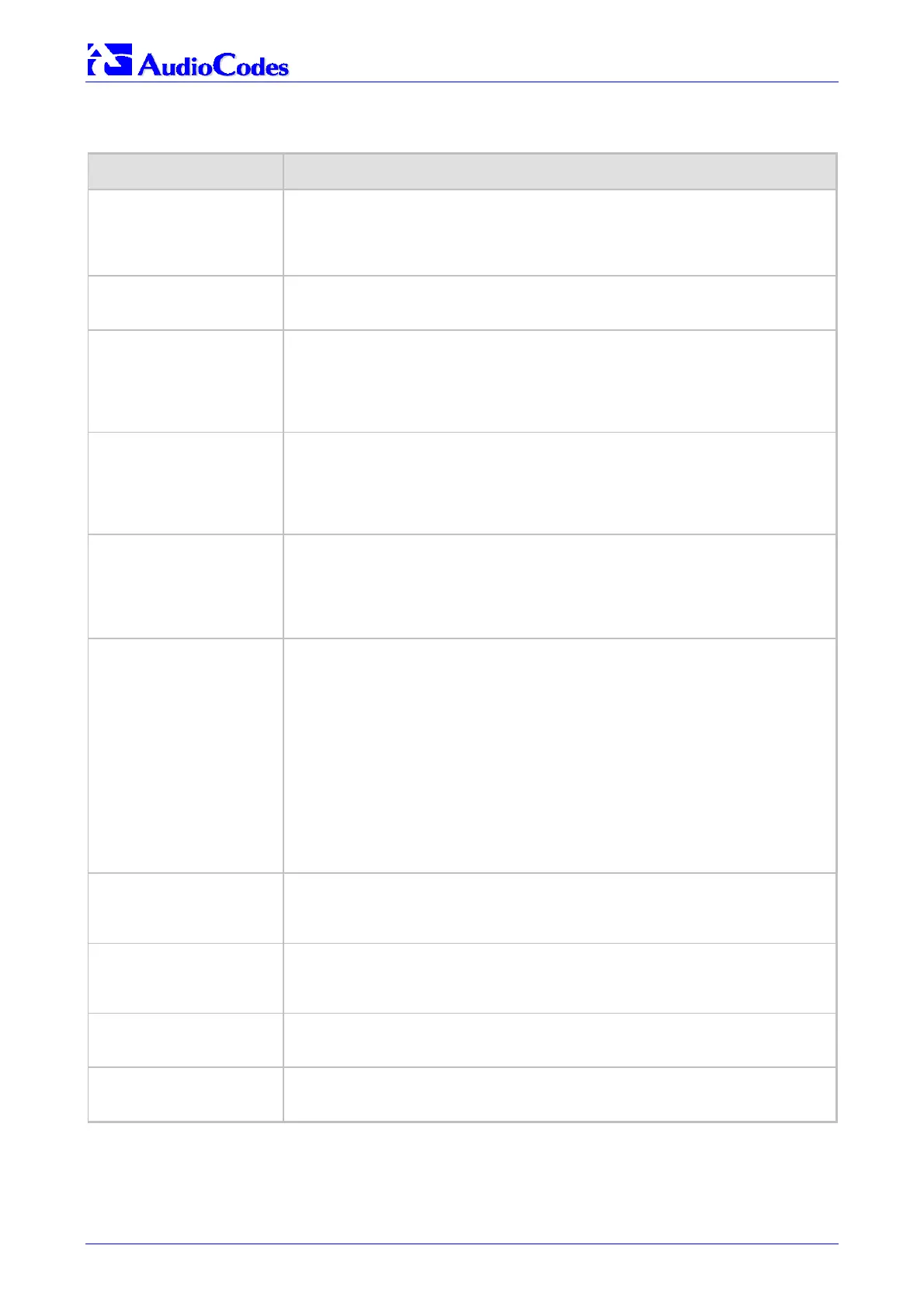